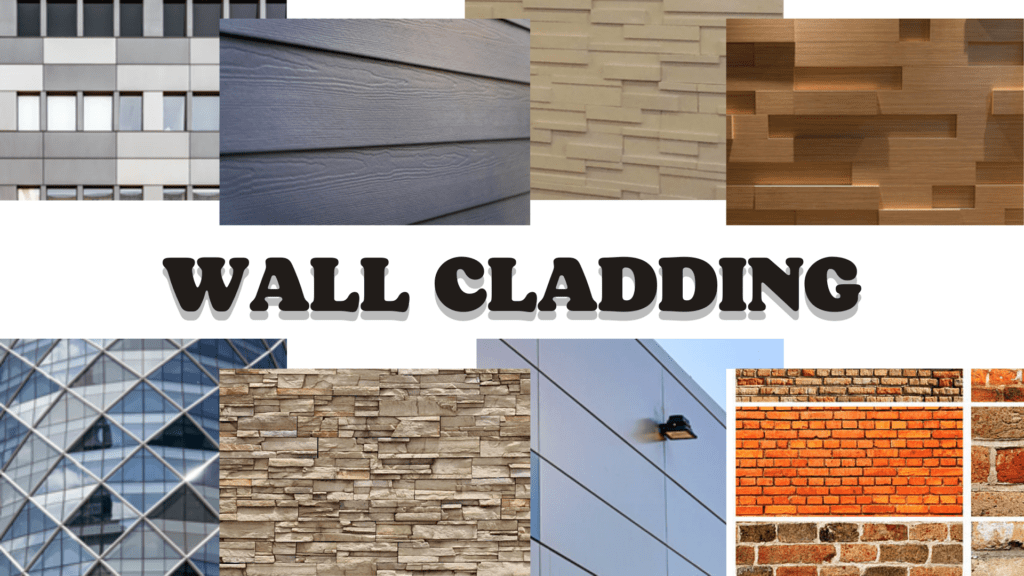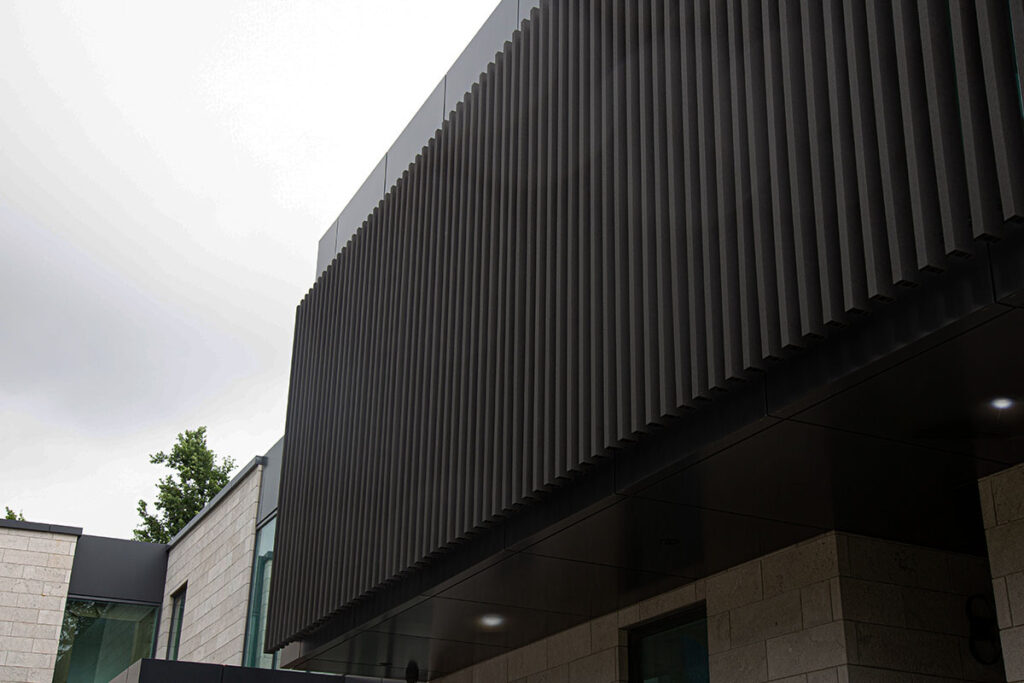When it comes to enhancing the appearance and functionality of your walls, wall cladding is an excellent option. But how to choose right wall cladding? Not only does it add a layer of protection, but it also improves the aesthetics of your space. However, with so many different types of cladding materials available, choosing the right one can be overwhelming. To help you make an informed decision, here are some factors to consider while selecting the right wall cladding:
1. Durability: One of the most important factors to consider is the durability of the cladding material. It should be able to withstand weather conditions, resist damage, and have a long lifespan. Natural stone cladding, such as slate or granite, is known for its exceptional durability.
2. Maintenance: Consider the level of maintenance required for the cladding material. Some materials, like wood, may require regular sealing or painting, while others, like PVC, are low maintenance. Choose a material that aligns with your maintenance preferences and schedule.
3. Aesthetics: The appearance of the cladding material should complement your overall design scheme. Consider the texture, colors, and patterns available in different materials. Stone cladding offers a timeless and elegant look, while timber cladding provides a warm and natural feel to the space.
4. Cost: Determine your budget for wall cladding and explore different options within that range. While natural stone may be more expensive upfront, it can add significant value to your property in the long run. On the other hand, PVC or vinyl cladding may be a more affordable option.
5. Insulation: Consider the insulation properties of the cladding material. High-quality insulation can help improve energy efficiency and reduce heating and cooling costs. Materials like insulated metal panels or fiber cement cladding offer excellent insulation properties.
6. Environmental Impact: If sustainability is a priority for you, choose a cladding material that is eco-friendly. Look for materials that are recyclable, made from renewable resources, or have a low carbon footprint. Glass cladding, for example, is a sustainable option as it allows for natural light and reduces dependency on artificial lighting.
How to Choose Right Wall Cladding Materials Online?
You can conveniently purchase wall cladding materials online. Many reputable suppliers and manufacturers offer a wide range of cladding options on their websites. This allows you to browse through different materials, compare prices, and select the ones that suit your requirements. However, it is essential to research and choose a reliable supplier to ensure the quality and authenticity of the products.
Types of Wall Cladding Materials

There are various types of wall cladding materials available, each with its own unique properties and benefits. Some popular options include:
1. Natural stone: This includes materials like granite, marble, limestone, and slate. Natural stone cladding offers a luxurious and timeless look while providing durability and weather resistance.
2. Timber: Timber cladding adds warmth and character to any space. It can be installed horizontally or vertically, and different types of wood, such as cedar or oak, can be used for a rustic or contemporary aesthetic.
3. PVC or vinyl: PVC or vinyl cladding is a cost-effective option that requires minimal maintenance. It is lightweight, easy to install, and offers good insulation properties. It is available in various colors and finishes.
4. Fiber cement: Fiber cement cladding is a durable and low-maintenance option. It is resistant to fire, rot, and pests, making it ideal for exterior applications. It can also mimic the appearance of wood, stone, or brick.
5. Metal: Metal cladding, such as aluminum or steel, is known for its strength and durability. It is commonly used in commercial buildings and offers a sleek and modern aesthetic.
Glass – An Efficient and Sustainable Cladding Material
Glass cladding is an excellent choice for those looking for efficient and sustainable wall cladding. It offers several benefits:
1. Natural Light and Energy Efficiency: Glass cladding allows ample natural light to enter the space, reducing the need for artificial lighting during the day. This can result in energy savings and a more pleasant indoor environment.
2. Visual Appeal: Glass cladding adds a modern and sleek look to any building. It can create a sense of transparency and openness while still providing privacy.
3. Easy Maintenance: Glass cladding is easy to clean and maintain. Regular cleaning with a glass cleaner can keep it looking pristine.
4. Durability: When properly installed, glass cladding is highly durable and can withstand various weather conditions. It is resistant to UV rays, moisture, and temperature changes.
5. Recycling Potential: Glass is a highly recyclable material, making it a sustainable choice for cladding. It can be recycled and reused, reducing its environmental impact.
The Use of Glass in Green Building Architecture
In addition to its efficiency and sustainability, glass also plays a vital role in green building architecture. Here’s how:
1. Passive Solar Heating: Glass allows sunlight to enter the building, creating a greenhouse effect. This passive solar heating can help reduce the need for heating systems, resulting in energy savings and reduced greenhouse gas emissions.
2. Daylighting: Glass cladding maximizes natural light, reducing the need for artificial lighting and decreasing energy consumption. It also improves occupant well-being and productivity by providing a connection to the outdoors.
3. Ventilation and Air Quality: Glass cladding can be used in combination with operable windows or natural ventilation systems to allow for fresh air circulation and improved indoor air quality.
4. Greenhouse Gas Reduction: By reducing energy consumption in buildings, glass cladding contributes to the overall reduction of greenhouse gas emissions. This helps combat climate change and promote sustainability.
Other Cladding Materials
Apart from glass, there are several other cladding materials to consider:
1. Brick: Brick cladding offers a classic and traditional look. It is durable, low-maintenance, and provides good insulation properties.
2. Composite Panels: Composite panels, such as aluminum composite panels, combine different materials to provide enhanced durability and aesthetics. They offer design flexibility and are commonly used in modern architecture.
3. Ceramic: Ceramic cladding is known for its versatility and durability. It comes in a wide range of colors, textures, and finishes, allowing for creative designs.
4. Stone Veneer: Stone veneer is a thin layer of natural stone that is applied to the wall surface. It provides the appearance of real stone while being lighter and more cost-effective.
Latest in Designs – Sustainable Cladding
As sustainability becomes a key focus in the construction industry, sustainable cladding options are gaining popularity. Some of the latest trends in sustainable cladding designs include:
1. Recycled Materials: Cladding made from recycled materials, such as recycled wood or recycled plastic, is an excellent choice for environmentally-conscious individuals. These materials reduce waste and contribute to a circular economy.
2. Living Walls: Living walls, also known as green walls, are vertical gardens that act as cladding for the walls. They provide insulation, improve air quality, and add a touch of nature to the space.
3. Solar Cladding: Solar cladding integrates solar panels into the cladding system, allowing buildings to generate renewable energy while providing protection.
4. Biophilic Design: Biophilic design focuses on incorporating natural elements into the built environment. Cladding materials that mimic natural textures or patterns, such as wood or stone, promote a connection with nature.
Cladding Materials – Safety Norms & Standards
When choosing wall cladding materials, it is important to consider their compliance with safety norms and standards. Cladding materials must meet fire safety regulations and have appropriate fire resistance properties. They should also adhere to building codes and standards set by local authorities.
It is crucial to ensure that the cladding material you choose has been tested and certified for fire resistance. Look for certifications such as Class A, B, or C fire ratings, which indicate the level of fire protection the material provides.
Additionally, consider the overall safety of the cladding material in terms of structural integrity and resistance to impact or weather-related damage. Ensure that the material meets industry standards for strength, durability, and performance.
The Market for Cladding Materials
The market for cladding materials is vast and constantly evolving. With advancements in technology, new materials and designs are continuously being introduced. The market offers a wide range of options to suit different budgets, preferences, and architectural styles.
The demand for sustainable and eco-friendly cladding materials is growing as more individuals and businesses prioritize environmental consciousness. The market now offers an array of sustainable options, such as recycled materials, green walls, and solar cladding.
Additionally, there is a rising trend towards customizable cladding materials that allow for unique designs and creative expressions. Manufacturers and suppliers are offering a variety of textures, colors, and finishes to cater to individual aesthetic preferences.
Frequently Asked Questions (FAQs)
Which is the cheapest option of natural stone for wall cladding?
The cost of natural stone for wall cladding can vary depending on the type of stone and its availability. Generally, slate is considered to be one of the more affordable options for natural stone cladding. However, it’s important to consider factors such as installation costs and maintenance requirements when determining the overall cost.
Can wall cladding be done on both exterior and interior walls?
Yes, wall cladding can be applied to both exterior and interior walls. Exterior cladding provides protection against the elements and enhances the building’s aesthetics, while interior cladding can add style and texture to indoor spaces.
What are the types of stone cladding?
Stone cladding can be achieved using various types of natural stone, including granite, marble, limestone, slate, and sandstone. Each type of stone offers unique colors, textures, and patterns, allowing for a wide range of design possibilities.
How do I choose the right cladding?
To choose the right cladding, consider factors such as durability, maintenance requirements, aesthetics, cost, insulation properties, and environmental impact. Research different materials, compare their benefits and drawbacks, and assess how well they align with your specific needs and preferences.
What is the best type of wall cladding?
The best type of wall cladding depends on your specific needs and preferences. Different materials offer different benefits, so it’s important to consider factors such as durability, maintenance, aesthetics, cost, and insulation properties. Natural stone cladding, such as granite or slate, is known for its durability and timeless appeal, while materials like PVC or vinyl cladding offer affordability and low maintenance.
Why choose cladding?
Cladding offers several benefits, making it a popular choice for both residential and commercial spaces. It provides an additional layer of protection for walls, enhancing their durability and weather resistance. Cladding also improves the aesthetics of the space, offering a wide range of design options to suit different styles. Additionally, cladding can provide insulation and energy efficiency, reduce maintenance requirements, and contribute to sustainable building practices.
We hope this blog has provided you with helpful insights on choosing the right wall cladding. Remember to consider factors such as durability, maintenance, aesthetics, cost, insulation properties, and sustainability when making your decision. Whether you opt for natural stone, glass, timber, or any other cladding material, ensure it meets safety standards and aligns with your specific needs and preferences. With the right choice of wall cladding, you can enhance the appearance and functionality of your walls while creating a space that is both stylish and protected.
- Discover the Best Corrugated Wall Panel Cleaners
- Effective Corrugated Stain Removal: Keeping Your Surfaces Pristine
- Corrugated Panel Maintenance: Ensuring Longevity and Aesthetics
- How to Clean Corrugated Walls Safely: Tips for a Flawless Finish
- Mastering Corrugated Panel Cleaning: Tips for a Polished Finish

